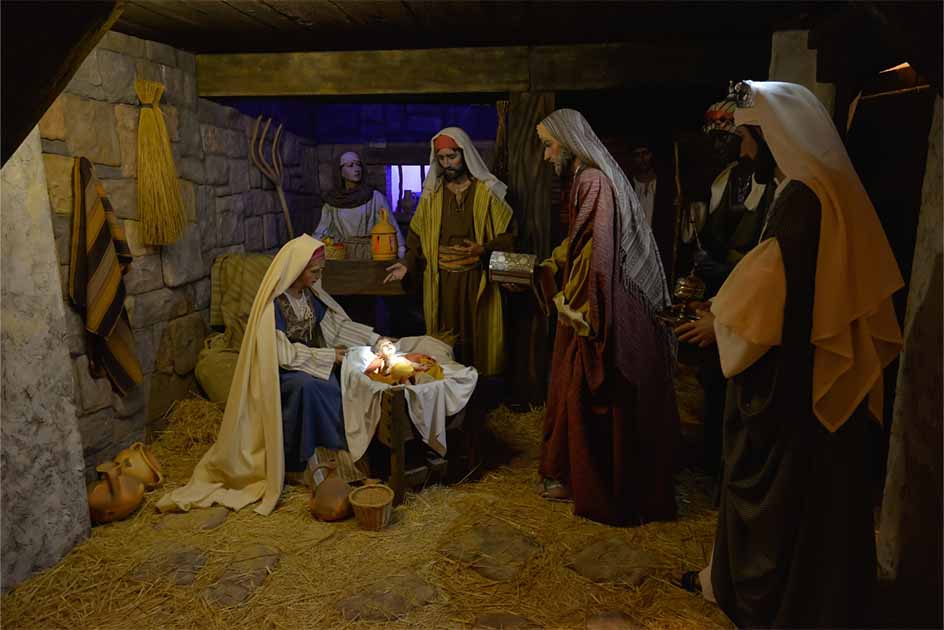Celebrating Christmas on December 25 Began As Early As the Second Century AD
By Martinus Ariya Seta/The Conversation
Many people, including Christians, believe the origin of the date of Christmas is related to the pagan feasts to worship the solar god Sol Invictus, Saturn’s god Saturnalia, or the Persian solar god adopted by the Romans, Mithras.
Academically, this view is also known as historical religions theory. The theory suggests the Catholic Church in Rome, Italy, began celebrating Christmas on December 25 in 336 AD to replace the pagan celebrations.
However, several ancient manuscripts and theories reveal that the original celebrations of Christmas began even earlier than 336 AD, some bringing it right back to the second century.
Determining Jesus’ Birth Date
Some sources from around 200 AD implicitly and explicitly show how December 25 was determined as the date of Jesus’s birth.
Hippolytus (170-235 AD), a prominent theologian of the Catholic Church in Rome, mentioned the date of Jesus birth in his 204 AD work, “Commentary on Daniel”.
He stated Jesus was born “in Bethlehem, eight days before the calendar of January [December 25], the 4th day of the week [Wednesday]”.
In this context, Hippolytus used the Julian calendar, a solar calendar introduced by Julius Caesar in 46 BC.
But in Jewish tradition, the date of conception of a holy person coincides with the date of death. Early Christians believed that March 25 was when Jesus was crucified.
Based on this theological assumption, the calculation shows that Jesus’ conception also happened on March 25. This means, Jesus was born exactly nine months later, or on December 25. This theological-based calculation is known as Calculation Theory.
The theory suggests Jesus’s birth date was not linked to the pagan rituals to worship Sol Invictus, Saturnalia and Mithras, since the pagan feasts were not celebrated on December 25.
Sol Invictus was likely celebrated on August 8, 9, or 28, October 19 or 22, or December 11.
Saturnalia was celebrated between December 17-23.
As for Mithras, there is no compelling evidence that it was celebrated on December 25.
- Has the Childhood Home of Jesus Christ Actually Been Found in Nazareth?
- Silver and Gold: The Legend of the Christmas Spider and Tinsel

Three kings or wise men turned up shortly after Jesus’ birth. (Rawpixel.com/Adobe Stock)
The Origins of Christmas Celebrations
Three different manuscripts further prove Christmas was celebrated before 336 AD. Didascalia Apostolorum, Liber Pontificalis, and Epistle of Theophilus The texts provide information on the pastoral life of early Christians, their religious ceremonies (liturgies) and the names of popes.
Didascalia is an ancient text from 250 AD. The text mentions the celebration of the Epiphany, the manifestation of Christ to the ordinary people. The Catholic Church celebrates Epiphany to commemorate the visit of three wise men in Bethlehem.
The Eastern Orthodox and Orthodox churches celebrate the Epiphany to commemorate the baptism of Jesus. Epiphany is part of the Christmas feast in the Catholic, Eastern Orthodox and Orthodox Churches.
The Didascalia text states that Epiphany is celebrated every January 6 in the Julian calendar. When we convert this date to the Gregorian calendar, a solar calendar that has been widely used since 1582 AD until now, the Epiphany falls on December 25.
Liber Pontificalis, which contains a short biography of the popes, suggests the celebration of Christmas in the 2nd century AD. The text reveals that Pope Telesphorus (125-136 AD) instructed the celebration of Jesus’s birth. The text does not mention the date of the festival. However, Liber Pontificalis proves that the Christmas celebration’s history is older than we used to think.
Epistle of Theopilus mentions December 25 as the date of the celebration of Jesus birth. The text suggests that the celebration was prior to 196 AD, thus, it is likely that Christmas was celebrated before that.
The three texts above prove that the origin of Christmas is not Sol Invictus, Saturnalia, or Mithras celebrations, and that Christians have been celebrating Christmas on this day since the second century.
This article was originally published under the title ‘Celebrating Christmas on December 25 began as early as 2 century CE, history shows’ by Martinus Ariya Seta on The Conversation, and has been republished under a Creative Commons License.
Top image: A nativity scene showing the scene of Jesus’ birth, now taken to be December 25th. Source: itsajoop/Adobe Stock


















Comments
Luke 1:26-27 tells is that "And in the sixth month the angel Gabriel was sent from God unto a city of Galilee, named Nazareth,to a virgin betrothed to a man whose name was Joseph, of the house of David. The virgin’s name was Mary."
Jesus' conception was, therefore, in the sixth month of the year. But what calendar year are we referring to?
If it is the Republican Roman one, that puts His birth in May or thereabouts, nine months after the then 'sixth' month of August. If it is the Jewish one of Elul, in August/September this puts His birth in late May or early June.
The latter may seem a rational choice. However, the Jewish calendar is credited to Hillel II, around 358 A.D, and was based on the Babylonian 19-year cycle with some modifications to accommodate Jewish ritual. It is not the calendar of the Old Testament.
If it is not the Roman one, then what calendar is it? An earlier Hebrew calendar is a possibility. It is said that the first Biblical month of the year was Aviv (Abib), because the first ears of early grain could then be harvested (the Hebrew 'Aviv' means 'green almost ripe grain ear'). This started around the March equinox, which again puts the birth of Jesus in or around June.
This, of course, relies on a nine-month pregnancy. But, if one accepts virginal conception, one should perhaps not necessarily even presume the exact length of following gestation.
In short, we don't know when Jesus was born, whether it be the day, the month or even the precise year.